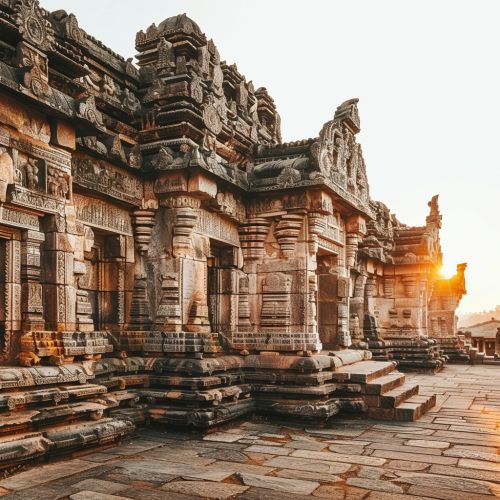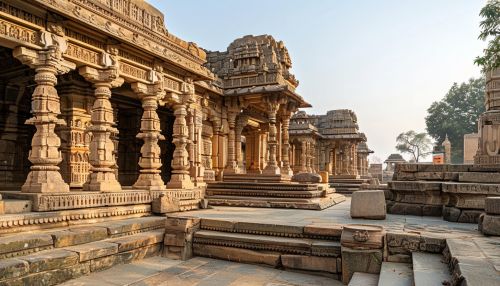Muhurta
Introduction
A Muhurta is a traditional unit of time in Hindu and Vedic astrology, representing a specific period of time within a day. The concept of Muhurta is deeply rooted in ancient Indian astronomy and astrology, where it plays a crucial role in determining auspicious times for various activities such as rituals, ceremonies, and daily tasks. Each Muhurta is believed to have its own unique qualities and influences, making it an essential element in the practice of Jyotisha, the traditional Hindu system of astrology.
Definition and Duration
In classical texts, a Muhurta is defined as a period of 48 minutes. This duration is derived from the division of a day (24 hours) into 30 equal parts. Therefore, one day consists of 30 Muhurtas. The concept of Muhurta is closely related to the Panchang, the Hindu calendar, which is used to calculate the positions of celestial bodies and determine auspicious times.
Historical Context
The origins of the Muhurta can be traced back to the Vedic period, where timekeeping was an essential aspect of daily life and religious practices. Ancient Indian scholars and astronomers, such as Aryabhata and Varahamihira, made significant contributions to the understanding and calculation of Muhurtas. Their works, along with texts like the Surya Siddhanta and the Brihat Samhita, provide detailed insights into the astronomical and astrological significance of Muhurtas.
Calculation of Muhurta
The calculation of Muhurta involves several factors, including the positions of the Sun, Moon, and other celestial bodies. The day is divided into 30 equal parts, each representing a Muhurta. These Muhurtas are further classified based on their auspiciousness, which is determined by various astrological principles.
Types of Muhurtas
There are several types of Muhurtas, each with its own specific characteristics and significance. Some of the most commonly used Muhurtas include:
- **Brahma Muhurta**: This is the period roughly one and a half hours before sunrise, considered highly auspicious for spiritual practices and meditation.
- **Abhijit Muhurta**: This is the period around midday, considered highly auspicious for starting new ventures and important activities.
- **Rahu Kala**: This is a period of approximately 90 minutes that occurs every day, considered inauspicious for starting new activities.
Applications of Muhurta
The concept of Muhurta is widely used in various aspects of Hindu life, including:
Rituals and Ceremonies
Muhurtas play a crucial role in determining the timing of important rituals and ceremonies, such as weddings, housewarming ceremonies, and religious festivals. The selection of an auspicious Muhurta is believed to enhance the positive outcomes of these events.
Daily Activities
In traditional Hindu households, Muhurtas are also used to determine the best times for daily activities such as bathing, eating, and studying. This practice is based on the belief that aligning daily activities with auspicious Muhurtas can lead to better health, prosperity, and overall well-being.
Medical Astrology
In Ayurveda, the traditional system of Indian medicine, Muhurtas are used to determine the best times for administering treatments and performing medical procedures. This practice is based on the belief that the body's natural rhythms are influenced by celestial forces, and aligning medical treatments with auspicious Muhurtas can enhance their effectiveness.
Astronomical Significance
The concept of Muhurta is closely related to the movements of celestial bodies and their influence on human life. Ancient Indian astronomers developed sophisticated methods for calculating the positions of the Sun, Moon, and other planets, which are essential for determining Muhurtas. These calculations are based on the sidereal system, which measures time based on the fixed positions of stars.
Modern Relevance
In contemporary times, the concept of Muhurta continues to be relevant in Hindu culture and astrology. Despite the advancements in modern science and technology, many people still consult astrologers to determine auspicious Muhurtas for important events and activities. The practice of Muhurta selection is also gaining popularity in other parts of the world, as more people explore the benefits of aligning their lives with natural rhythms and celestial influences.
Criticism and Skepticism
While the concept of Muhurta is widely accepted in Hindu culture, it has also faced criticism and skepticism from various quarters. Critics argue that the practice is based on superstitions and lacks scientific evidence. However, proponents of Muhurta selection believe that it is a valuable tool for enhancing the quality of life and achieving harmony with the natural world.
Conclusion
The concept of Muhurta is a fascinating aspect of Hindu and Vedic astrology, offering a unique perspective on timekeeping and its influence on human life. By understanding and applying the principles of Muhurta, individuals can align their activities with auspicious times and enhance their overall well-being. Whether viewed from a traditional or modern perspective, the practice of Muhurta selection continues to hold significance in the lives of many people around the world.


